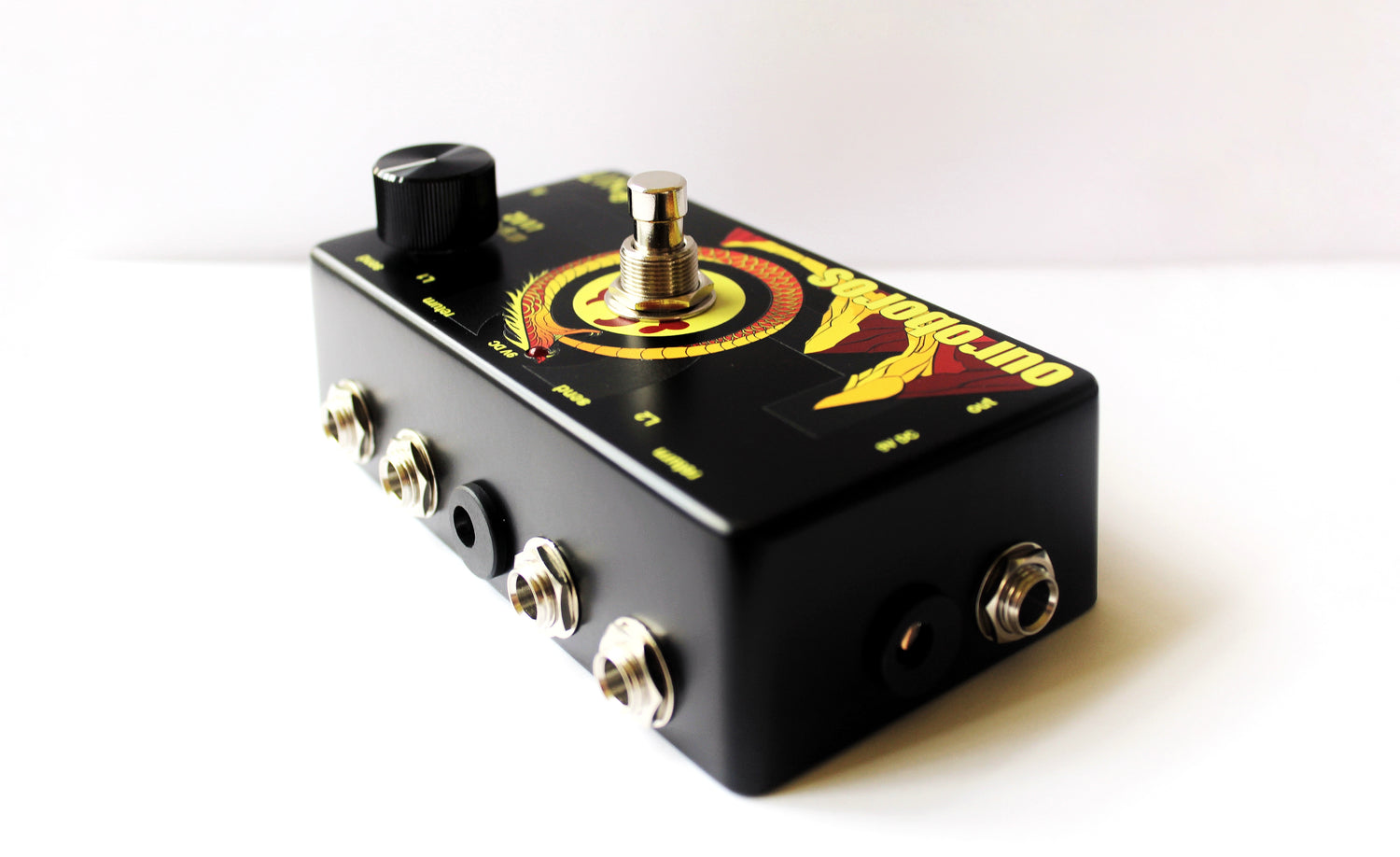
Ouroboros
A dual-loop blender pedal that lets you seamlessly mix between your dry signal and a single loop, or blend between two separate loops. Choose between latching or momentary switching to activate effects on the fly or lock them in for continuous play.

Ultimate DRY / WET
Every production plugins uses a dry/wet setting and here we bring it to your pedalboard!
Specifications
-

Ouroboros
Technical Overview
The Ouroboros is a versatile dual-loop send/return pedal crafted for Guitar and bass and more mono instruments players who want intuitive signal routing, creative flexibility, and real-time control.
---
Dual Effects Loops
Two independent true-bypass loops: Loop 1 and Loop 2
Each loop includes dedicated send and return jacks
Perfect for switching between pedal chains or running effects in parallel
---
Footswitch: Latch + Momentary Modes
A single footswitch with dual behavior:
Tap to latch: toggles the loops on/off
Hold for momentary use:
When the loop is off, hold to momentarily engage the loops
When the loop is on, hold to momentarily bypass
This hybrid switching gives you expressive control for on-the-fly effect drops, rhythm accents, or subtle toggling.
---
Wet/Dry or Loop Blend Control
With only one Loop connected, the Wet/Dry knob blends between your dry input and the loop that’s connected
With both Loop 1 and Loop 2 connected, the knob crossfades between them:
Full left = Loop 1 only
Center = Equal blend
Full right = Loop 2 only
Ideal for morphing tones, subtle effect layering, or contrasting textures.
---
9V DC Power Outputs
Ouroboros can power two additional pedals via built-in 9V DC output jacks
Current output is suitable for most standard 9V effects (check individual pedal requirements)
Reduces the need for a separate power supply or daisy chain
---
Ouroboros is more than a loop pedal, it's a live performance tool, a routing matrix, and a tone sculptor designed for fluidity and experimentation. Whether you’re switching, blending, or momentarily transforming your sound, Ouroboros keeps your signal alive in constant motion.
---
-
Circuit
Analog
Bypass
True Bypass
Audio
Mono
Power Supply
9V DC Negative center
Dimensions (in)
125B
Current Draw
65mA
Year Released
2024
Input
Guitar
The Tale of the Ouroboros
Long ago, in the dawn of time before written history, the ancient ones spoke of a great serpent, the Ouroboros who emerged from the void. Alone in the endless dark, the serpent searched for meaning, but found nothing beyond itself. In hunger, curiosity, and realization, it turned upon its tail and bit.
But instead of ending, the serpent began to transform. By consuming itself, it became eternal, a symbol of the infinite cycle of life, death, and rebirth.
Through the ages, the Ouroboros appeared in dreams and symbols, etched in Egyptian tombs and alchemical scrolls. To the philosophers, it meant unity of opposites: creation through destruction, endings that are beginnings. It reminded seekers that nothing truly dies, all is change, all is becoming.
The Ouroboros is not just a snake eating its tail, it's the endless pulse of time, the fire that devours but never dies, the rhythm behind all things.

